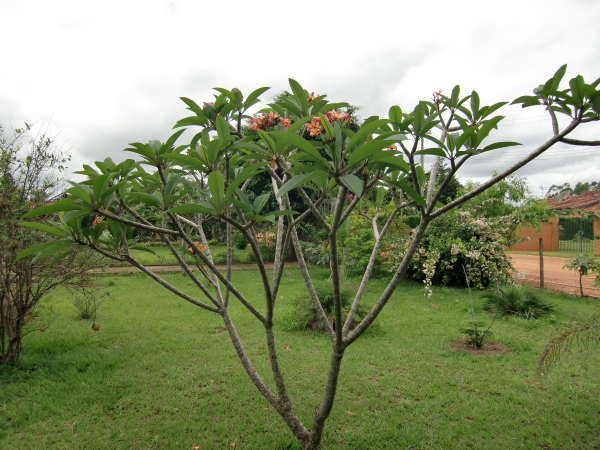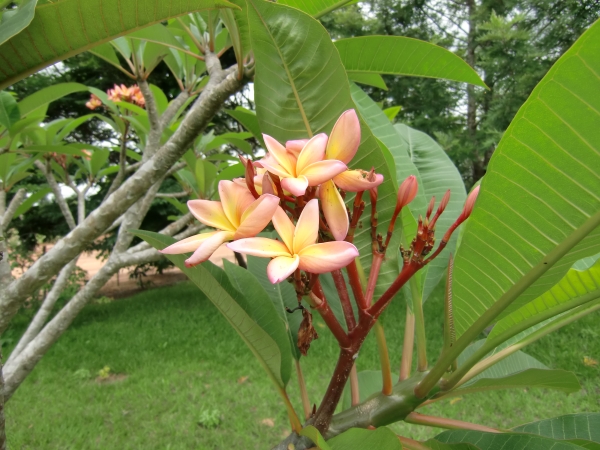

Plumeria alba (Temple Tree, Caribbean Frangipani)
The Caribbean Frangipani (Plumeria alba) is one species from the genus Plumeria in the family Apocynaceae.
The Caribbean Frangipani is one to 33 feet tall tree with a trunk diameter of up to 4 inches or a trunk. Its branches are firm, greenish to brownish colored. The thick, almost leathery leaves are 6 to 15.2 inches long and 0.6 to 2 inches wide. Anteriorly they are pointed or obtuse, the base is concentrated. The upper surface is hairless, the undereside is covered with whitish trichons, but may be also glabrous and reticulate veined. The leaf margin is strongly bent.
The inflorescences are compact and consist of several to numerous techinal single flowers. The inflorescence axes are 0.4 to 1.6 inches long, the flower stalks are strong, hairless and up to 0.8 inches long. The cup is 2 to 3 mm long and is filled with rounded calyx lobes. The crown is white in color and has in the middle one yellow center. The corolla tube is 0.8 inches long, the crown lobs are obovate, rounded and about 1.2 inches long. The smell of lime and gardenia. There are also cultivars of this species with other colors like ours existing, with yellow, pink, orange colored and bicolored flowers.
The pods are 4 to 6 inches long and 0.6 inches wide.
The species occurs in Puerto Rico, the Virgin Islands and the Lesser Antilles. It grows in dry to moist sites in coastal thickets on hillsides and in low alotitudes. However, it is grown worldwide in the tropics and subtropics, including the Canaries and Brazil.
It can propagate by cuttings easily, one trial I made with success, the cutting was rooting on simply.
We have 3 specimens, one of them self propagated by cutting. Unfortunately they are so sensitive that one of them has died by the frost of -2°C on 26th June 2011 on one exposed place.

Cultivar of Plumeria alba in flower in December 2009.

Close-up view of the flower of the cultivar of Plumeria alba in December 2009.
Cultivar of Plumeria alba in our garden in the southern
winter 2010, the plant is deciduous.
Back to the Ornamental Plant List
Updated by Joachim Jaeck on October 13th, 2013